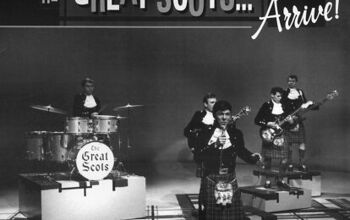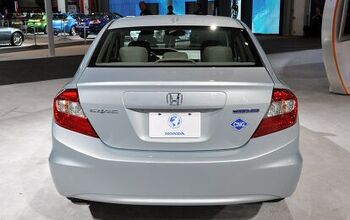Ask The Best And Brightest: Should A "Driver's Car" Flatter Or Challenge?
Anyone who’s ever spent more money than they really could afford on a car they absolutely couldn’t live without knows that a certain amount of buyer’s remorse comes with the territory. I certainly felt a fair share of doubt about my own such purchase, when, just days after buying my ’99 M Coupe, I drove a friend over the Mt Hood pass in heavy weather. Having driven the car only a few times by then, I knew little about the M’s handling characteristics beyond its reputation for making fast decisions at the limit of grip. Sure, I’d blasted it around some dry sweepers, and even strung a few corners together, but I had no idea what to expect on rough, wet roads with poor visibility until I found myself pushing to get around traffic a few miles from the top of the pass.
The opportunity wasn’t endless: about a quarter mile of passing lane had opened up just as Highway 26 disappeared around a long but sharp corner. As the M’s suspension loaded up, rebound off the battered road suddenly made the back end go all light, and the hair on the back of my neck prickled as some internal G-meter began to worry about where the rear tires’ next bit of grip was going to come from. And then, just as my right foot was easing back off the throttle in hopes of calming the rear end’s polka dance, minor potholes became full-on ruts filled with water, and the M’s oversized rear tires started hydroplaning. As the rear of the car started to pull back into a fishtail, I realized that my beloved new car was scaring me a little… and that the Oregon winter hadn’t even properly begun yet. Could it be, I wondered, that I had just spent a lot of money on the wrong car?
In fairness to the M, I was comparing it to an experience it couldn’t help but fall short of: my last real sportscar-on-a-winding-road jaunt involved a Porsche Cayman S on tight, well-paved Southern Californian roads. That experience (at least the parts where we could find an empty road) set my personal standard for what a true sportscar could do, namely create an instant connection between man and machine. From the driver’s seat of the Cayman, I felt in total control; the wheel communicated everything, the brakes were artesian wells confidence, and the mid-mounted engine made the thing feel like it was pivoting around me. As a result, I pushed it harder than anything I’ve pushed before, and yet felt less drama than I’d ever felt driving a car fast. Taking sharp corners at 80 MPH imparts the laugh-out-loud rush that can only come from violating ones personal sense of the laws of physics, but because physics seemed suspended by the Cayman’s impeccable poise, fear-based rush that is the more familiar hallmark of spirited driving never came.
Needless to say, a ten-year-old, front-engined coupe with a humble rear suspension was never going to match a brand-new Cayman for sheer confidence and ability, but even a month after my ass-clenching Mt Hood blast, Mr M was still scaring me a little. Even on the interstate, slight unevenness in the road surface will send the Clownshoe pulling in one direction or the other, and as the Oregon rain has started falling, hydroplaning has become an increasingly frequent occurrence. In both cases, the fundamental problem seemed to be in the steering: the wheel’s weighting lightens up considerably for a tiny fraction of turn directly on-center, accentuating the wayward tendencies of its chassis. Where the Cayman would whisper to your fingers at any wheel position, the M seemed to go strangely quiet when your hands were at ten and two.
As time went on, I began to worry. Was the steering bad? Was the alignment off? Was the eigenwillig M going to drive me over a yawning cliff despite (or rather, because of) my apparent overconfidence? One morning on a blast up to Seattle under more nasty weather conditions, the nagging voices built to a crescendo. I was twenty minutes (and one cup of coffee) into the trip, and already I felt like the M’s helm had a mind of its own, easing this way and that, demanding minor correction after minor correction. This was going to be a long trip… and an even longer ownership experience. Unless…
Suddenly I realized how little context I had to compare the M’s behavior to. Modern cars like the Cayman S and other late-model screamers I’ve driven are designed to flatter, and frankly, my experience with older, less-sophisticated performance cars is extremely limited. Maybe, I thought, just maybe the problem is… me.
I know how silly this might sounds, but at that moment, my relationship with the M Coupe changed forever. Instead of using my subconscious to worry about everything that felt strange or un-Cayman-like about the M, I cleared my mind and slipped into the kind of meditative state I use on the shooting range. If I couldn’t hear what the M had to say, I would have to listen harder. And sure enough, when I was properly focused, the steering’s on-center slackness that had seemed vague and wayward before was suddenly revealed to be endlessly communicative… just on a far more subtle level than the chunky heft of its other steering positions. In that tiny slice of wheel play, there was a world of communication and instant response… but I had to focus on it completely to even know it was there.
Since my revelation, I’ve fallen more in love with the M every time I’ve driven it. Whereas before I liked its stripped-down, old-school interior out of a reflexive hatred for the gizmos that permeate modern cockpits, it’s now a reminder that this car truly demands attention. Previously, the edges of grip felt vague and ominous, inspiring fear and hesitancy. Now, even in wet weather, I’ve learned to push the M a little further each chance I get, increasing my confidence with each opportunity.
As my respect for the car grew, I found it capable of communicating more than I would have guessed when I bought it. In fact, just the other day I accidentally pushed Mr M across the limit under power, crossing the Rubicon in my relationship with the car. Though I was driving with complete focus, the rear-end swung around quickly enough to actually surprise me; the on-power limit of the M Coupe is a fine line indeed. But once it happened, I knew exactly where to catch it, and I ended up pulling off the prettiest little drift I’ve ever managed, almost without noticing.
The point of all this is that my eyes have been opened to a whole new approach to driving as entertainment. It’s not slow-car-fast fun, and it’s not how-does-this-car-let-me-do-this modern sportscar fun. It’s scowl-at-the-road, don’t-stop-to-blink, surrender-yourself-to-the-car fun. Yes, it’s work… but it’s fun work. Quite a bit like my job at TTAC, come to think of it. In any case, my eyes have been opened. The term “driver’s car” has gained a number of new entries in my personal dictionary. In fact, I’m almost starting to believe that a “true” “driver’s car” should demand much of its driver, even if that makes it seems less capable at first blush.
Still, something tells me, most enthusiasts would prefer to be flattered rather than challenged by a performance car. What say you?
More by Edward Niedermeyer
Latest Car Reviews
Read moreLatest Product Reviews
Read moreRecent Comments
- Ltcmgm78 Just what we need to do: add more EVs that require a charging station! We own a Volt. We charge at home. We bought the Volt off-lease. We're retired and can do all our daily errands without burning any gasoline. For us this works, but we no longer have a work commute.
- Michael S6 Given the choice between the Hornet R/T and the Alfa, I'd pick an Uber.
- Michael S6 Nissan seems to be doing well at the low end of the market with their small cars and cuv. Competitiveness evaporates as you move up to larger size cars and suvs.
- Cprescott As long as they infest their products with CVT's, there is no reason to buy their products. Nissan's execution of CVT's is lackluster on a good day - not dependable and bad in experience of use. The brand has become like Mitsubishi - will sell to anyone with a pulse to get financed.
- Lorenzo I'd like to believe, I want to believe, having had good FoMoCo vehicles - my aunt's old 1956 Fairlane, 1963 Falcon, 1968 Montego - but if Jim Farley is saying it, I can't believe it. It's been said that he goes with whatever the last person he talked to suggested. That's not the kind of guy you want running a $180 billion dollar company.


































Comments
Join the conversation
Ed, if you're not running Ireland Engineering or Powerflex rear subframe bushings, you really should be. The stock ones are way too soft, permitting a ton of lift-throttle oversteer as well as a whole lot of hoopla on rough surfaces. It's the one fatal design issue in the Z3 rear suspension. I can live with the 'outdated' semi-trailing arms in the rear, but not with the whole subframe steering toward the outside of the corner when I lift throttle or lose traction under power. Steel gray 2002 M roadster here. The Ireland Engineering subframe bushings were easily the best money I've spent on the suspension, while being the least expensive part (though the removal of the stock bushings is a decent chunk of work even with the correct tool). I wrote my impressions up over 6 years ago here: http://www.bimmerfest.com/forums/showthread.php?t=60613 And I vote for challenge.
yes